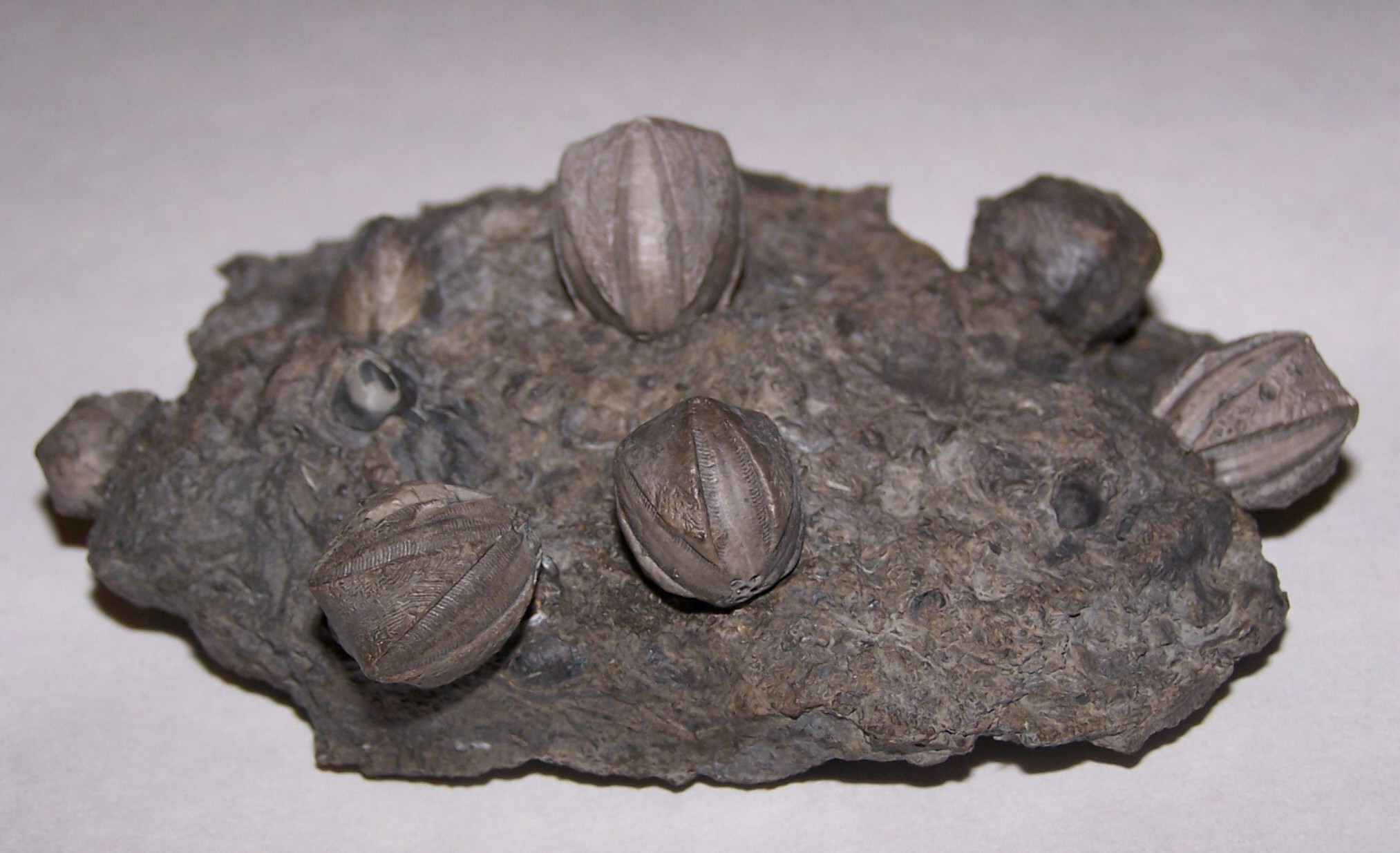- Blastoid
Taxobox
name = Blastoids
fossil_range =Ordovician -Permian

image_caption = Blastoid fossils ("thecae") attached to matrix.
regnum =Animal ia
phylum =Echinodermata
subphylum = Blastozoa
classis = Blastoidea
classis_authority = Say, 1825
subdivision_ranks = Subclasses
subdivision =Fissiculata Spiraculata Blastoids (class Blastoidea) are an
extinct type of stemmedechinoderm . Often called "sea buds", blastoidfossil s look like small hickory nuts. They originated, along with many other echinoderm classes, in theOrdovician period and reached their greatest diversity in theMississippian epoch of theCarboniferous period. Blastoids persisted until theirextinction at the end ofPermian , about 325/350 million years ago. Although never as diverse as their contemporary relatives, thecrinoid s, blastoids are quite common fossils, especially in many Mississippian-age rocks. They can be found inIllinois ,Kentucky , Tennessee andIndiana .Like most echinoderms, blastoids were protected by a set of interlocking plates of
calcium carbonate , which formed the main body, or "theca". In life, the theca of a typical blastoid was attached to a stalk or column made up of stacked disc-shaped plates. The other end of the column was attached to the ocean floor by a holdfast, very much like stalked crinoids. The mouth was located at the summit of the theca. Radiating like flower petals from the center were five food grooves, or "ambulacra". Each ambulacrum had many long, thin, fine structures called "brachioles", which were used to trap food particles and bring them to the mouth. Brachioles were delicate structures, and in fossils are not usually preserved in place. A series of five spiracle plates surrounded the star-shaped mouth, which included theanus , mouth and entrances to a set of five complex, folded respiratory organs known as "hydrospires". These spiracles prevented mixing of the various fluids. Waste elimination was through the "anispiracle", an opening formed by the fusing of anus and adjacent spiracles.Like crinoids, blastoids were high-level, stalked suspension feeders (feeding mainly on
plankton ic organisms) that inhabited clear-to-silty, moderately-agitated ocean waters from shelf to basin. The food gathering system of blastoids consisted of several types of ambulacra. Food entered the brachiolar ambulacra, was transferred to the side ambulacra through the brachiolar pit, then transferred to the main (median) ambulacra, and finally entered the mouth. Each of these ambulacra were roofed by cover plates. The cover plates of the brachiolar groove were movable and could open, allowing food to enter, or close as needed. Other cover plates may also have been movable.Blastoids are subdivided into two subclasses:
Fissiculata , which are characterized by direct entrance to the individual hydrospires by way of slits; andSpiraculata , which are characterized by indirect entrance to the hydrospires through canals by way of pores. The earliest blastoid yet found, "Macurdablastus" from the Middle Ordovician ofTennessee , cannot be classified as either subclass.External links
* [http://www.ucmp.berkeley.edu/echinodermata/blastoidea.html Blastoids at UC Berkeley Museum of Paleontology]
* [http://www.palaeos.com/Invertebrates/Echinoderms/Blastoidea/Blastoidea.htm Palaeos.com article]
* [http://gsa.confex.com/gsa/2005NC/finalprogram/abstract_86391.htm A STUDY OF THE ONTOGENY OF THE MISSISSIPPIAN BLASTOID]
*Drawings and color reconstruction of Pentremites godoni blastoid at [http://www.emilydamstra.com/portfolio.php?searchtext=blastoid www.emilydamstra.com]
Wikimedia Foundation. 2010.
